November 11th, 2006 — Hardware, Humor, Mac, Trivia
Inspired by a recent MacRumors article about a Japanese version of the “Get a Mac†campaign, I wondered how many foreign-language ads Apple had made. I found five:
Unfortunately, the Japanese version is the only one with actors other than John Hodgman and Justin Long. The rest are simply dubbed.Still, if I had to choose anyone to replace John and Justin, it would be these guys.
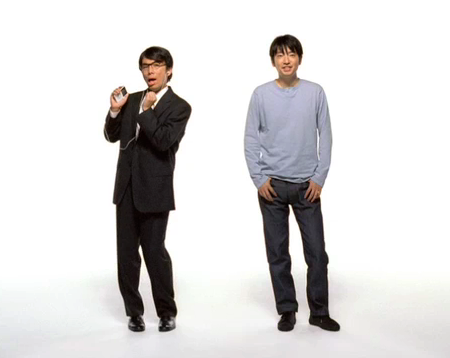
November 6th, 2006 — Gadgets, Hardware, Reviews
Back in May, I covered the Treo 700p announcement, declaring it a worthy replacement for my current handheld, the Treo 650. I had always intended to upgrade, but I couldn’t justify the expense until recently: Last month, my service contract with Sprint expired (making me eligible for a discount on the Treo), and my wife’s cheap Nokia 6225 finally bit the dust. Solution? I got a new 700p; my wife got my old 650.
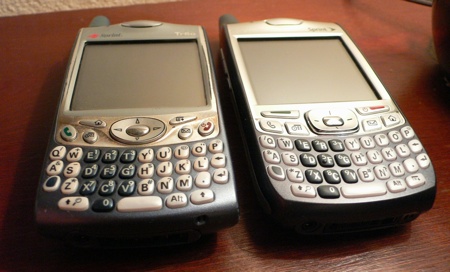
The Treo 650 (left) and Treo 700p (right)
Now that I’ve actually had a chance to use the Treo 700p, I can offer a more thorough review. First, the cons:
- I thought cell phones were getting smaller and sleeker, but the Treo 700p is just as thick and chunky as the model it replaces. After eighteen months, you’d think Palm’s hardware engineers could slim their flagship product just a little bit. Instead, the Treo remains (unofficially) the world’s fattest cell phone.
- The Menu key, a rather frequently pressed button, has been moved. It’s no longer found on the middle-right, which was a perfectly natural location for thumb usage when holding the phone in your left hand (and still very accessible when holding the phone in your right). Instead, it is now located all the way down on the lower right. Not only does this make the Menu key nearly impossible to push when holding the phone in your right hand, it requires an awkward reach of the thumb when held in the left hand. Why, Palm, why?
- The 700p has two phone buttons: a green button to answer calls and (just below it) a Phone hard key to switch to the dial pad. There’s no reason for this redundancy: On the 650, a single Phone button worked perfectly fine for both functions. Worse, the extra button takes up space that could otherwise be used for the Menu key (see above).
- With its faster EV-DO radio, the Treo is now able to play streaming video. It’s a nice idea, but I found the quality to be terrible. Instead of spending $10/month on Sprint TV, I’d rather just use my video iPod.
- Sprint now requires the purchase of a $40/month “Phone As Modem” plan if you want to use the Treo to give your laptop wireless Internet access. (The 650 only required the Vision plan at $15/month.) Luckily, a hack is available that disables the need for PAM. Full details are in my updated step-by-step guide for Bluetooth dial-up networking.
And now the pros:
- Speaking of Bluetooth DUN, this feature had to be enabled and disabled manually on the 650. It was a tedious process of switching to the Bluetooth preferences, turning on DUN, then getting a warning message about Bluetooth devices not working when DUN is enabled. On the 700p, this entire process is automatic. DUN enables and disables itself on demand, so there are no warning messages to deal with.
- The keyboard has a better feel. The keys are slightly bigger and easier to push.
- Internet access is noticeably faster. Although certainly not “broadband-like†as Sprint claims, the speed is a big improvement over the 650. In terms of raw performance, the 650 is like having a wireless dial-up connection, while the 700p is more like ISDN (somewhere between dial-up and broadband). Raw speed for downloads is about 10 KB/s on the 650 and at least 20 KB/s on the 700p, although there’s still an awful lot of latency when surfing on the 700p. Still, net access on the 650 was sometimes painful, but on the 700p it’s usually acceptable. A case in point: The Internet access at home temporarily went down last week, so I used the 700p’s DUN feature as a backup. After a few minutes, I almost forgot I wasn’t on Wi-Fi anymore!
- My favorite new feature in the 700p is one that I haven’t seen mentioned anywhere: It now charges directly from a USB port! So, instead of carrying yet another AC adapter with me when I travel, the same USB cable that I use to sync my Treo with my laptop can also be used to charge it.
That’s four pros and five cons. As you can see, I’m not quite as thrilled about the 700p as I was back in May, at least not as an upgrade from the 650. Given that the operating system, processor, and screen haven’t changed at all, and the form factor is almost the same (and worse in some ways), it’s hard to justify the cost. The only substantial improvements are the EV-DO radio and the ability to charge from USB. Keep that in mind if you’re a 650 user looking to upgrade to the Treo 700p.
October 25th, 2006 — Humor, Personal, Trivia
Hello. My name is Trevor Harmon.
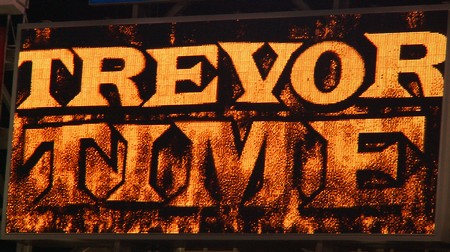
“Trevor†comes from a Welsh surname that originally meant “big village†or “great settlement.†It’s derived from the Welsh words tref (“village†or “homesteadâ€) and mawr (“largeâ€). “Trevor†is also a name of Irish descent, an Anglicized form of Gaelic Ó Treabhair, meaning “wise†or “prudent.†Alternate forms include “Trefor,†“Trevar,†and “Trever,†and it is closely related to the names “Trevis†and “Trevinâ€. Here it is in Chinese:

Famous Trevors include baseball player Trevor Hoffman, actor Trevor Howard, television presenter Sir Trevor McDonald, and pro wrestler Trevor Murdoch. “Trevor†is also the star of a cartoon and is saving young lives. As a baby name, “Trevor†was virtually unheard of in the United States until the 1950s. Its popularity grew rapidly in the 70s and 80s, hitting a peak in the early 90s.
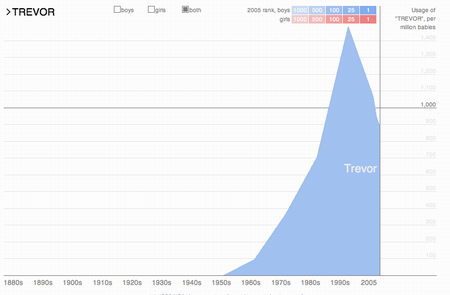
“Harmon†is an Anglo-Saxon name, originally derived from the Old French hermant and Old German Herreman, both meaning “warrior.†A common spelling variation is “Harman.†Famous Harmons include model Angie Harmon, cyberneticist Leon Harmon, and actor Mark Harmon. The Harmon Trophy is a prestigious aviation award. The Irish coat of arms for the Harmon family looks like this:

My pirate name is Black Tom Flint.
My rap star name is General Killa.
My scammer name is Sithole Tungay, a high-placed officer of a Prime Bank in Africa, Lome Branch.
My bunny name is Humphrey Bogart Stretch-Hop-A-Long.
My cyborg name is Transforming Robotic Exploration and Vigilant Observation Replicant (T.R.E.V.O.R.).
My monkey name is Fingers Knuckle-dragger.
My Japanese name is 猿渡駿. (“Saruwatari shunâ€, monkey on a crossing bridge, fast person.)
My Mormon name is Trevier Caramon.

My poet name is Oberon Dingleberry.
My spammer name is Gratis F. Griddle.
My spy name is Trevor “Intrigue†Harmon.
My squirrel name is Nibbles Smallnuts.
My Star Wars name is Treha Taola, Nommaxima of Halls.
My vampire name is Count of The Great Oceans.
My fluffy kitten name is Sprinkles Merryweather.
My Santa’s little helper name is Lovable Dancing-Tummy.

October 16th, 2006 — Personal, Research
Last summer, I sent a quick e-mail to the editors at SERVO Magazine thanking them for their online service. Free to all subscribers, the service provides electronic copies of back issues, which is great for when I see an article that’s relevant to my research and I want to archive it.
Other publishers provide electronics copies, too, but you usually get a weak HTML conversion, or you have to pay extra to get the full back issue database, or both. SERVO, on the other hand, offers high-res, fully searchable PDFs of every issue, and they match the printed version exactly. Not many publishers go that extra mile.
When the October issue of SERVO arrived, I found a reprint of my little email on page 7.
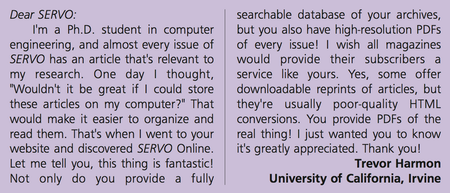
October 10th, 2006 — Hardware, Mac, Personal
My computer upgrade cycle is 2.5 years. That’s about how long it takes for technology to improve to the point where new computers, with their faster chips, bigger hard drives, and more RAM, make the upgrade cost worthwhile. And since I’ve had my PowerBook since April 2004 (about 2.5 years ago), I’ve really been itching to upgrade.
My eye has been on the MacBook Pro, but with Intel’s announcement of the Core 2 Duo chip, I knew an upgrade of Apple’s flagship portable was imminent. I decided to put off my purchase until the very day the Core 2 Duo MacBook Pro was announced.
So I waited. And I waited. And I waited some more. While I was waiting, I saw countless news stories of PC manufacturers announcing Core 2 Duo laptops. But Apple? They were silent. During this time, my PowerBook felt as if it were getting slower and slower and slower.
And then, one day in September, my PowerBook got really slow. In fact, it stopped. Completely. Something had gone horribly wrong with the main logic board, and I had to send it to Apple Support for repair. I didn’t want to be without a computer for the next 7 to 10 days, and I certainly didn’t want to wait who-knows-how-long for Apple to announce a Core 2 Duo laptop. So I bit the bullet, walked into an AppleStore, and walked out with a brand new 15-inch MacBook Pro.
After upgrading the RAM from 512MB to 1.5GB (almost a necessity with Mac OS X) and upgrading the hard drive from 80GB to 120GB (did the upgrade myself, aided by Other World Computing’s instructional video), I ended up with a pretty smokin’ fast laptop. How fast is it?
- It’s so fast, it finishes compiling my code before I type it.
- It’s so fast, it requires two halt instructions to stop it.
- It’s so fast, it executes an infinite loop in six seconds.
(Ah, the oldies but goodies. I love computer jokes.)
Of course, the true measure of a computer’s speed is BZFlag. My new MacBook Pro is so fast I can pump up all the detail settings to the max, and the game still runs smoothly. That was impossible on my old PowerBook. In fact, I didn’t quite realize how much I was suffering with my PowerBook’s aging G4 processor until I saw a Geek Patrol article that chronicled Mac performance through the years. Their graph clearly shows the huge jump in speed that Apple is getting by moving their laptops to Intel processors, not to mention how severely the G4 has stagnated in recent years.
But speed isn’t the only thing I’m getting with my new MacBook Pro. It includes some nice bonus features, too:
Nifty remote for listening to music and watching DVDs

Backlit keyboard for low-light situations (airplanes, midnight snacks, etc.)

Built-in iSight video camera
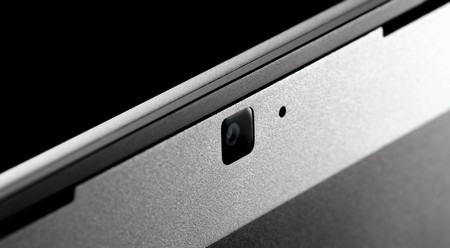
Full-size DVI port
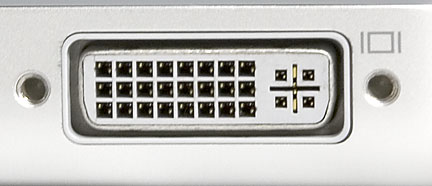
(My old PowerBook had a mini-DVI port, so I had to remember to bring an adapter whenever I was to give a presentation. Very annoying.)
One final note: My new MacBook Pro has a 15“ display, pleasantly roomier than my old 12†PowerBook. Web surfing, coding, and almost everything else I do is more comfortable with the increased screen real estate. Of course, that also makes the laptop itself much wider and thus a bit harder to squeeze into a carry-on bag. Still, it’s thinner than my old PowerBook and only one pound heavier. It could always be worse.
October 4th, 2006 — Gadgets, Personal, Research
Nate Anderson wrote an excellent article for Ars Technica about the recently released version 2 of the Robosapien. This humanoid robot is just a toy, but it’s supposedly one of the most advanced toys ever. After all, the manufacturer claims that the Robosapien V2 is a “highly evolved robotic fusion of technology and personality, combining fluid biomechanical motion with a multi-sensory, interactive humanoid personality.â€
That’s quite a statement! But how does it compare with reality? The answer can be found in one of Nate’s videos. Here, Robosapien demonstrates a new ability: bowling.
ROBOSAPIEN BOWLING
(turn your sound up)
Copyright © Ars Technica
[flashvideo file=http://vocaro.com/trevor/blog/wp-content/uploads/2009/06/robosapien_bowling.mp4 width=450 height=338 /]
Wow-wee! (Sarcasm.)
Yes, I realize Robosapien is just a toy, but I think the video perfectly illustrates the state of robotics today. There’s an enormous disconnect between the kind of robot we want to build:

…and the kind that’s actually available to us:

In other words, the field of robotics is wide open. There’s so much work to do, so much more we’ve yet to accomplish! In fact, the robotics industry looks so compelling and full of promise that I’m seriously considering making a career of it. I’m convinced this century will come to be known as The Robotics Age, and I want to be ready for it! In fact, I’m already finding myself focusing on robotics as the major “motivating example†for my doctoral thesis.
Who knows? Maybe one day I’ll learn enough to create a robot that can actually bowl…
September 18th, 2006 — Rants, Software, Tips
Most people know that when you sell or give away a computer, you should format its hard drive to make sure your sensitive information doesn’t fall into the wrong hands. And most of those people know that formatting a drive doesn’t actually erase all the data. Instead, you should use a special utility that overwrites every block of data on the drive. And a smaller portion of those people know that overwriting a block just once isn’t enough. If you really want to be safe, you should apply the Gutmann method, which overwrites every data block 35 times. And an even smaller portion of those people know that the Gutmann method is a myth.
I had always thought that the idea of overwriting the same data block 35 times was a bit dubious. (Why would 35 times be secure but 34 times not be?) And yet, most disk utilities provide an option to erase a hard drive 35 times over.
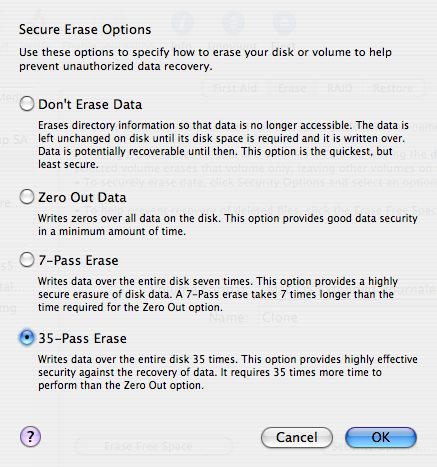
In a recent Slashdot article, I discovered a comment that shed some light on this issue. User Psionicist wrote (with typos faithfully reproduced):
I would like to take the oppertunity here to debunk a very common myth regarding hard drive erasure.
You DO NOT have to overwrite a file 35 times to be “safeâ€. This number originates from a misunderstanding of a paper about secure file erasure, written by Gutmann.
The 35 patterns/passes in the table in the paper are for all different hard disk encodings used in the 90:s. A single drive only use one type of encoding, so the extra passes for another encoding has no effect at all. The 35 passes are maybe useful for drives where the encoding is unknown though.
For new 2000-era drives, simply overwriting with random bytes is sufficient.
Here’s an epilogue by Gutmann for the original paper:
Epilogue In the time since this paper was published, some people have treated the 35-pass overwrite technique described in it more as a kind of voodoo incantation to banish evil spirits than the result of a technical analysis of drive encoding techniques. As a result, they advocate applying the voodoo to PRML and EPRML drives even though it will have no more effect than a simple scrubbing with random data. In fact performing the full 35-pass overwrite is pointless for any drive since it targets a blend of scenarios involving all types of (normally-used) encoding technology, which covers everything back to 30+-year-old MFM methods (if you don’t understand that statement, re-read the paper). If you’re using a drive which uses encoding technology X, you only need to perform the passes specific to X, and you never need to perform all 35 passes. For any modern PRML/EPRML drive, a few passes of random scrubbing is the best you can do. As the paper says, “A good scrubbing with random data will do about as well as can be expectedâ€. This was true in 1996, and is still true now.
Looking at this from the other point of view, with the ever-increasing data density on disk platters and a corresponding reduction in feature size and use of exotic techniques to record data on the medium, it’s unlikely that anything can be recovered from any recent drive except perhaps one or two levels via basic error-cancelling techniques. In particular the the drives in use at the time that this paper was originally written have mostly fallen out of use, so the methods that applied specifically to the older, lower-density technology don’t apply any more. Conversely, with modern high-density drives, even if you’ve got 10KB of sensitive data on a drive and can’t erase it with 100% certainty, the chances of an adversary being able to find the erased traces of that 10KB in 80GB of other erased traces are close to zero.
So it seems my suspicions have been confirmed: You do not need to erase a hard drive 35 times before selling it on eBay. A quick zeroing out of the data is sufficient.
September 12th, 2006 — Humor, Research, Trivia
One of the things you learn as a Ph.D. student is how to do research. Though I’m still far from mastering that particular lesson, there’s something I’ve discovered along the way: Academic researchers love coming up with long titles for their papers. In fact, a colleague’s recent 27-word Ph.D. thesis had me wondering, “Just how long do these titles get?†I decided to find out. I wrote a little script that scans the DBLP database and spits out the longest titles it finds (based on number of characters, not words). Excluding non-English titles, here’s the top-ten list:
- In silico exploration of the fructose-6-phosphate phosphorylation step in glycolysis: genomic evidence of the coexistence of an atypical ATP-dependent along with a PPi-dependent phosphofructokinase in Propionibacterium freudenreichii subsp. shermanii
- A Comparative Study of Artificial Neural Networks Using Reinforcement Learning and Multidimensional Bayesian Classification Using Parzen Density Estimation for Identification of GC-EIMS Spectra of Partially Methylated Alditol Acetates on the World Wide Web
- Performance of empirical potentials (AMBER, CFF95, CVFF, CHARMM, OPLS, POLTEV), semiempirical quantum chemical methods (AM1, MNDO/M, PM3), and ab initio Hartree-Fock method for interaction of DNA bases: Comparison with nonempirical beyond Hartree-Fock results
- Joint quantum chemical and polarizable molecular mechanics investigation of formate complexes with penta- and hexahydrated Zn2+: Comparison between energetics of model bidentate, monodentate, and through-water Zn2+ binding modes and evaluation of nonadditivity effects
- A Simple Flexible Program for the Computational Analysis of Amyl Acyl Residue Distribution in Proteins: Application to the Distribution of Aromatic versus Aliphatic Hydrophobic Amino Acids in Transmembrane alpha-Helical Spanners of Integral Membrane Transport Proteins
- Three-Dimensional Quantitative Structure-Property Relationship (3D-QSPR) Models for Prediction of Thermodynamic Properties of Polychlorinated Biphenyls (PCBs): Enthalpies of Fusion and Their Application to Estimates of Enthalpies of Sublimation and Aqueous Solubilities
- WEB OBJECTS TIME: When Microsoft Started Speaking Like a Good Open-Standards Citizen, The Netscape Extensions Tail Tried to Wag The Dog and Object-Oriented Software Turned Static Web Pages Into Dynamically-Linked Access Boulevards to Significant Online Collection Databases
- Hydrogen bonding in diols and binary diol-water systems investigated using DFT methods. II. Calculated infrared OH-stretch frequencies, force constants, and NMR chemical shifts correlate with hydrogen bond geometry and electron density topology. A reevaluation of geometrical criteria for hydrogen bonding
- Molecular mechanical models for organic and biological systems going beyond the atom centered two body additive approximation: aqueous solution free energies of methanol and N-methyl acetamide, nucleic acid base, and amide hydrogen bonding and chloroform/water partition coefficients of the nucleic acid bases
- The nucleotide sequence of a 3.2 kb segment of mitochondrial maxicircle DNA from Crithidia fasciculata containing the gene for cytochrome oxidase subunit III, the N-terminal part of the apocytochrome b gene and a possible frameshift gene; further evidence for the use of unusual initiator triplets in trypanosome mitochondria
Of course, a trivia researcher’s work is never done. For future analysis, I’ll focus on papers with the highest number of authors. (I’ve already discovered a potential candidate.)
September 4th, 2006 — Humor, Personal
After discovering Spamusement, the website of cartoons inspired by actual spam, I began to notice that some of my junk mail would make pretty good cartoons. Though I’m no artist, I thought I’d try my hand at making some “spamusement†of my own. Here’s my first attempt:
orbit burp

Yes, I actually received some spam titled “orbit burp.†It was an ad for a penny stock, but the subject line was randomly generated, obviously.
I posted my drawing in the Spamusement forums, and it was surprisingly well-received!
August 30th, 2006 — Research, Trivia, TV
After reading a recent Slashdot article about a Star Trek Ph.D. thesis winning an academic prize, I wondered how many other theses involve Star Trek. According to Digital Dissertations, the answer is no less than fourteen! Here’s the list so far, from oldest to most recent:
And this list includes only Ph.D. dissertations in English that have the phrase “Star Trek†in the title. I’m sure there are many more theses that involve Star Trek in some peripheral way, not to mention journal articles, conference papers, and non-English publications.
As a Star Trek fan, I’m rather pleased that my favorite sci-fi franchise is considered worthy of serious academic study.
















